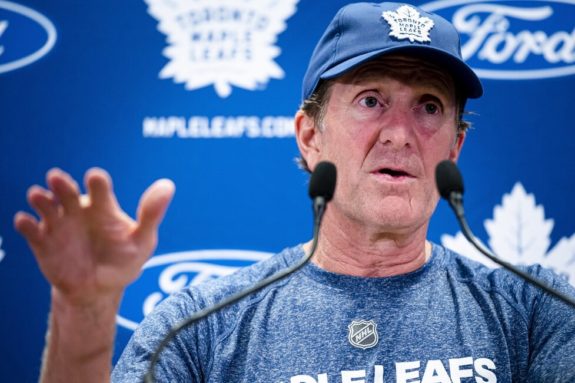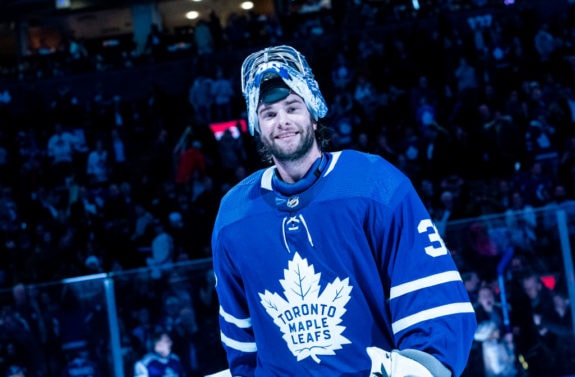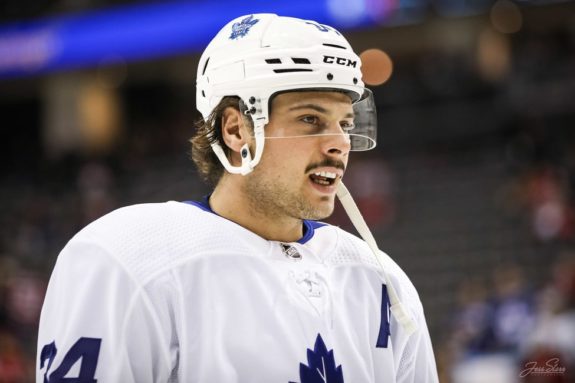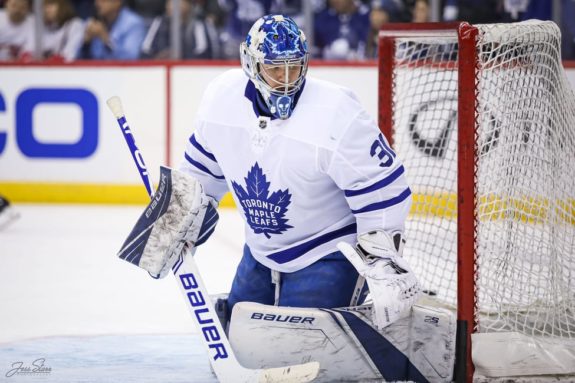Toronto Maple Leafs fans, we are absolutely in uncharted territory. The NHL regular season is now likely finished, as per a news release on March 15.
What we don’t know is when there will be playoffs. However, there are a few things we do know.
The Maple Leafs season turned around for the better when Sheldon Keefe replaced iconic head coach Mike Babcock. Specifically, the team had a 27-15-5 record under Keefe’s direction. When Babcock left, the team had a 9-10-4 record, was floundering, and clearly was out of the playoffs. The team simply played as if it didn’t care.
Related: Why Aren’t the Toronto Maple Leafs Trying Harder?
But Keefe changed that, and the Maple Leafs managed to become a team that earned its way into the playoffs. Although there remain many pessimistic fans, the team’s growth throughout the season bodes well for where they are headed.

In this post, as fans and players wait to see what happens, I want to review some news from the season – including why the season didn’t come together as expected and suggest how the team improved. Then, I’ll take a short look at where the team might stand should the playoffs continue in the near future.
Item One: Why Didn’t the Season Come Together as Expected?
This season was like a soft pretzel: it had so many twists and turns. Many Maple Leafs fans and hockey commentators expected the team to be in a hunt for the Stanley Cup this season, but the team didn’t pull the season together to make that happen. I believe there are three reasons they didn’t.
First, the leadership situation proved problematic. In retrospect, it seems general manager Kyle Dubas knew that – sooner or later – he was going to replace Babcock as the coach. There was a period of time after the team was ousted from last season’s playoffs when the organization went quiet on that topic. Finally, Dubas announced Babcock would return. It didn’t work.

Although I understand his reasons, had Dubas played that decision differently the team might have had a stronger season. In my view, the team simply quit playing for the old coach and, by the time he left, they were in a hole.
Second, the core of top players had simply not matured. They are skilled players and Dubas has locked them into long-term deals. However, except for center John Tavares (who is 29 years of age), these players are really young.
Related: NHL Rumors: Maple Leafs, Jets, Kings, NHL Coronavirus Updates
Auston Matthews is only 22 years old. Mitch Marner is also 22 years old. William Nylander is the senior citizen of the three at the ripe age of 23. It simply wasn’t the team’s time.
Third, the team’s defense was decimated by injuries. Jake Muzzin was out twice for more than two months total with broken bones. He missed January with a broken foot, then he missed late February to March with a broken hand. Morgan Rielly also missed 23 games with his broken foot. Cody Ceci missed 14 games with a sprained ankle.
That’s too many injuries for the team to overcome. And, the defense was the team’s Achilles heel to start the season (no pun intended with the broken feet the defensemen experienced).
Item Two: Areas Where the Team Improved?
As faltering as the season was, the Maple Leafs made a number of improvements to the roster and organization.
Area of Improvement One: Dubas Made Solid Trade Additions
To my mind, general manager Dubas yet again showed he had a vision of where he wanted the team to go and worked to enact that vision. When he was on the phone with other teams’ general managers as the trade deadline approached, many fans hoped he would make a splash by trading defenseman Tyson Barrie.
But Dubas didn’t trade Barrie, noting that he couldn’t negotiate a trade that helped his team. So, he did not concede to demands of the Maple Leafs fan base; instead, he pulled off a solid trade with the Los Angeles Kings to address two team needs. He added game-tough forward Kyle Clifford and upgraded his team’s backup goaltending with an all-round good guy and decent player in Jack Campbell.

Dubas also added the role-playing winger Denis Malgin from the Florida Panthers. The jury’s out on Malgin, but he brings the team added experience. As well, Dubas signed defenseman Muzzin to a contract extension.
Area of Improvement Two: The Defense Is Improved Because of Injuries
The Maple Leafs might not have added a top-two defenseman via the trade, but ironically the team improved its defense because of injuries to the team’s top defensemen.
Related: Maple Leafs News & Rumors: Robertson, Hyman, Spezza, & Kapanen
Those injuries necessitated that seldom-used players Martin Marincin and Timothy Liljegren played game-tough minutes. Rasmus Sandin, Travis Dermott, and Justin Holl also gained experience and moved further towards becoming NHL-ready players. Calle Rosen (who was traded with Nazem Kadri to the Colorado Avalanche) was brought back to the team for goalie Michael Hutchinson.
Assuming Ceci and Barrie, who are on expiring contracts, are likely gone at season’s end, adding those young defensemen to the pair of Muzzin and Rielly gives the team an arguably better defense than it iced early this season.
Area of Improvement Three: Young Players Matured
Because this point mirrors a point I made early in this post, I will only repeat it here. There’s no doubt Nylander’s career season shows his growth and maturity as a player. His 31 goals are nine more than his previous best. As well, he scored 59 points in 68 games. He was on a career-season pace.
The same is true with Matthews. He finished with 80 points in 70 games and his 30 goals scored in five-on-five situations are more than anyone else in the NHL. He became a better defensive player and improved his offense. By the end of the season, he had learned how to better use his size.

Marner is simply Marner. He was more than a point-a-game player and, in fact, his 51 assists (with his 16 goals and 67 points) in 59 games almost averaged an assist a game.
Just before the end of 2019, rookie Russian forward Ilya Mikheyev suffered horrible wrist lacerations. After surgery, he missed three months to heal and rehab. But, during his time with the team, Mikheyev played 39 games and scored 8 goals and 15 assists. The 6-foot-3, 25-year-old Mikheyev also became a difference-maker. He’s another scoring option somewhere in the roster.
Related: Dino Ciccarelli: From Undrafted to Underrated Hall of Fame Legend
I haven’t even mentioned Kasperi Kapanen’s progress throughout the season. He’s grown through a tough season with confidence to match his speed. He’s learning the game.
What’s Next for the Maple Leafs?
Who knows what will happen with the NHL playoffs? Should there be a postseason, the Maple Leafs would probably play the Tampa Bay Lightning. Likely that series would become one which goaltending would decide. If so, the current numbers favor the Lightning – but not by as much as fans think.

Tampa Bay starting goalie Andrei Vasilevskiy played 52 games with a 35-14-3 record, a goals-against-average of 2.56, and a save percentage of .917. Toronto starter Frederik Andersen also played 52 games with a 29-13-7 record, a goals-against-average of 2.85, and a save percentage of .909.
In a long series, those numbers don’t matter if one goalie is hot or cold. As well, the Maple Leafs lead the season’s series 2-1 and have similar speedy, high-scoring players. The difference is team defense; that said, injured Maple Leafs players would be returning to the ice.
So, is that a wash? If the playoffs begin, we shall see.